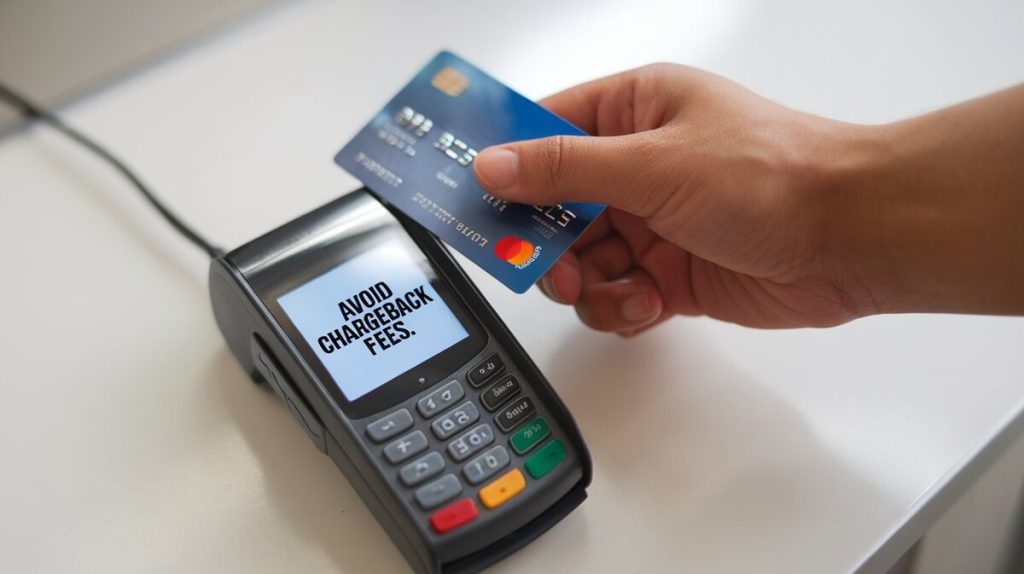Chargebacks are a financial burden for businesses, particularly in eCommerce and retail. They occur when a customer disputes a transaction, and the funds are returned to their account. The merchant loses the transaction amount and incurs additional fees. This guide covers effective methods to avoid chargebacks, minimize their impact, and reduce fees.
What Are Chargebacks?
A chargeback is a refund issued by the cardholder’s bank after a dispute over a transaction. While originally designed to protect consumers from fraud, chargebacks are now used for various reasons, including dissatisfaction with goods or services.
The Impact on Businesses
Chargebacks cost businesses more than the disputed amount. In addition to losing the sale, merchants must pay chargeback fees, which range from $15 to $100 per dispute, depending on the payment processor. High chargeback ratios can also result in penalties, including enrollment in monitoring programs like the Visa Dispute Monitoring Plan (VDMP) and Mastercard’s Excessive Chargeback Merchant (ECM) program. These programs impose additional fines, sometimes reaching $25,000 per month for prolonged violations.
Key Consequences:
- Loss of revenue and goods.
- Time spent gathering evidence and disputing claims.
- Increased scrutiny from payment processors.
- Risk of losing payment processing privileges.
Common Reasons for Chargebacks
Understanding the reasons behind chargebacks can help you prevent them. Here are the most common causes:
- Fraudulent Transactions: These make up 48% of chargebacks. Fraud occurs when a cardholder claims they didn’t authorize the transaction.
- Goods Not Received: Customers file chargebacks when they don’t receive their order, a common issue in eCommerce, representing 25% of chargebacks.
- Technical Errors: Errors like double billing or incorrect amounts contribute to about 13% of disputes.
- Product Not as Described: Dissatisfaction with the product or service often leads to chargebacks.
- Friendly Fraud: Legitimate transactions are disputed by customers, which accounts for 85% of chargeback cases.

How to Prevent Chargebacks
Preventing chargebacks is the best way to avoid the associated fees and penalties. Here are practical strategies that businesses can use:
1. Optimize Payment Processing Systems
- Use AVS and CVV Checks: Address Verification Systems (AVS) and Card Verification Value (CVV) codes help detect fraud by verifying the cardholder’s information.
- EMV Compliance: Merchants who process card-present transactions should use EMV-compliant terminals. These systems are designed to reduce fraud risks.
- Respond Quickly to Disputes: When a chargeback is initiated, respond quickly with all necessary documentation like transaction receipts, delivery confirmations, and email correspondence.
2. Clear Policies and Communication
To minimize disputes, make sure your return, refund, and cancellation policies are easy to find and understand. Highlight these policies on receipts and checkout pages. Merchanto.org, a trusted partner of Visa and MasterCard, emphasizes clear communication as a key factor in reducing disputes. Merchants can leverage their chargeback prevention solutions to reduce risk effectively. Visit Merchanto for more information.
3. Customer Service
Strong customer service reduces the likelihood of chargebacks. Make sure customers can easily reach you through multiple channels (phone, email, chat). Open communication helps resolve issues before they escalate into disputes.
- Send order confirmations and shipping notifications immediately to reduce disputes related to undelivered goods.
- Offer prompt customer support to address any issues before they become chargebacks.
4. Invest in Fraud Detection Tools
Fraud detection systems help identify suspicious transactions. Many payment processors offer fraud protection tools, including transaction monitoring and analysis, to reduce the risk of fraud-related chargebacks.
5. Detailed Product Descriptions
Misleading product descriptions are a common cause of disputes. Accurate descriptions and high-quality images help customers understand what they’re buying, reducing the likelihood of chargebacks. This is especially important for online merchants.
Tables and Data
Table 1: Top Causes of Chargebacks
| Reason | Percentage of Chargebacks |
|---|---|
| Fraudulent Transactions | 48% |
| Goods Not Received | 25% |
| Technical Errors | 13% |
| Friendly Fraud | 85% of total chargebacks |
| Product Not as Described | 9% |

Managing Chargebacks
Even with preventative measures, chargebacks can still happen. Here’s how to handle them effectively.
Step 1: Gather Evidence
When a chargeback occurs, the first step is to collect all relevant documentation:
- Transaction receipts.
- Signed delivery confirmations.
- Correspondence with the customer.
- Screenshots of your return/refund policy.
Step 2: Understand the Chargeback Code
Each chargeback will come with a reason code that explains why the dispute was filed. Different codes indicate different issues:
- Visa Reason Code 13.1: This code refers to disputes over goods not received.
- Mastercard Reason Code 4837: This code is for fraud-related disputes.
Step 3: Dispute the Chargeback
If you believe the chargeback is unjustified, you can dispute it by submitting a rebuttal letter along with your evidence. Only about 20% of chargebacks are resolved in favor of the merchant, so it’s crucial to provide strong documentation.
Table 2: Chargeback Fees by Processor
| Payment Processor | Fee Per Chargeback | Refundable if Dispute Won |
|---|---|---|
| Stripe | $15 | No |
| PayPal | $20 | Yes |
| Braintree | $25 | No |
| Checkout.com | $20 | No |
Advanced Chargeback Prevention Solutions
Using automated tools can help reduce chargebacks significantly. These systems offer real-time transaction monitoring, helping businesses spot suspicious activity before it turns into a chargeback.
Key Benefits:
- Real-Time Alerts: Monitor transactions for suspicious activity.
- Data-Driven Insights: Use analytics to identify patterns in chargebacks and prevent them.
- Chargeback Resolution Support: Merchanto.org helps businesses compile evidence and respond to disputes quickly.
Table 3: Visa and Mastercard Chargeback Programs
| Program | Threshold (Monthly) | Fee per Chargeback | Additional Fees |
|---|---|---|---|
| Visa Dispute Monitoring Program | >100 transactions, >0.9% | $50 | $25,000 for prolonged violations |
| Mastercard Excessive Chargeback | >100 transactions, >1.8% | $50 | $25,000 monthly after 7 months |
Conclusion: Stay Proactive
Preventing chargebacks should be a top priority for businesses. Clear policies, strong customer service, and fraud detection tools are critical to reducing chargebacks.
Chargebacks aren’t just a financial issue; they can damage a business’s reputation and ability to process payments. By working with trusted partners such as Visa, MasterCard businesses can protect themselves from chargebacks and maintain smooth operations.



